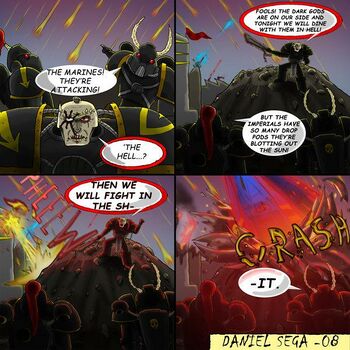Drop Pod

Just about every modern sci-fi setting has a military that uses Drop Pods to deploy; if you take a sufficiently broad interpretation, you could say that the Martian cylinders from H. G. Wells' The War of the Worlds were the very first, but it was Robert Heinlein's Starship Troopers that really crystallized the concept as we know it: a means of getting super-elite soldiers right where they are needed, when they are needed, and in style.
Warhammer 40,000
The Space Marine's iconic deployment method. A pod holds ten (or twelve, if you're a Codex Astartes-compliant chapter) Marines, or one Dreadnought, or one Thunderfire cannon. It takes a lot of the guesswork out of Deep Striking because it avoids obstacles automatically -- that's why Boreale loves them so much.
Deathstorm Drop Pod
A drop pod can hold weapons instead of soldiers. If a drop zone is just too hot to land in, the Space Marines will use Deathstorm Drop Pods (equipped with assault cannons or Whirlwind missile launchers) to clear the way. They're only BS 2, but they compensate through volume of fire.
Lucius Pattern Dreadnought Drop Pod
A drop pod with all the restraints and harnesses taken out, and only three fins instead of five. This means that only a Dreadnought can survive landing in it, but it also means that they get to assault as soon as they land.
Kharybdis Assault Pod
A Super Heavy Drop Pod used during the Great Crusade, capable of carrying thirty Marines or a full Dreadnought Talon.
Forge World used to make these in Battlefleet Gothic scale.
Starship Troopers
Each member of the Mobile Infantry gets his own pod, containing his suit of armor. The armor is actually perfectly capable of surviving re-entry, and can even fly ("a little," as Heinlein writes); the pod is actually meant to disintegrate in the atmosphere, giving the Mobile Infantryman a cloud of chaff to confuse ground defenses.